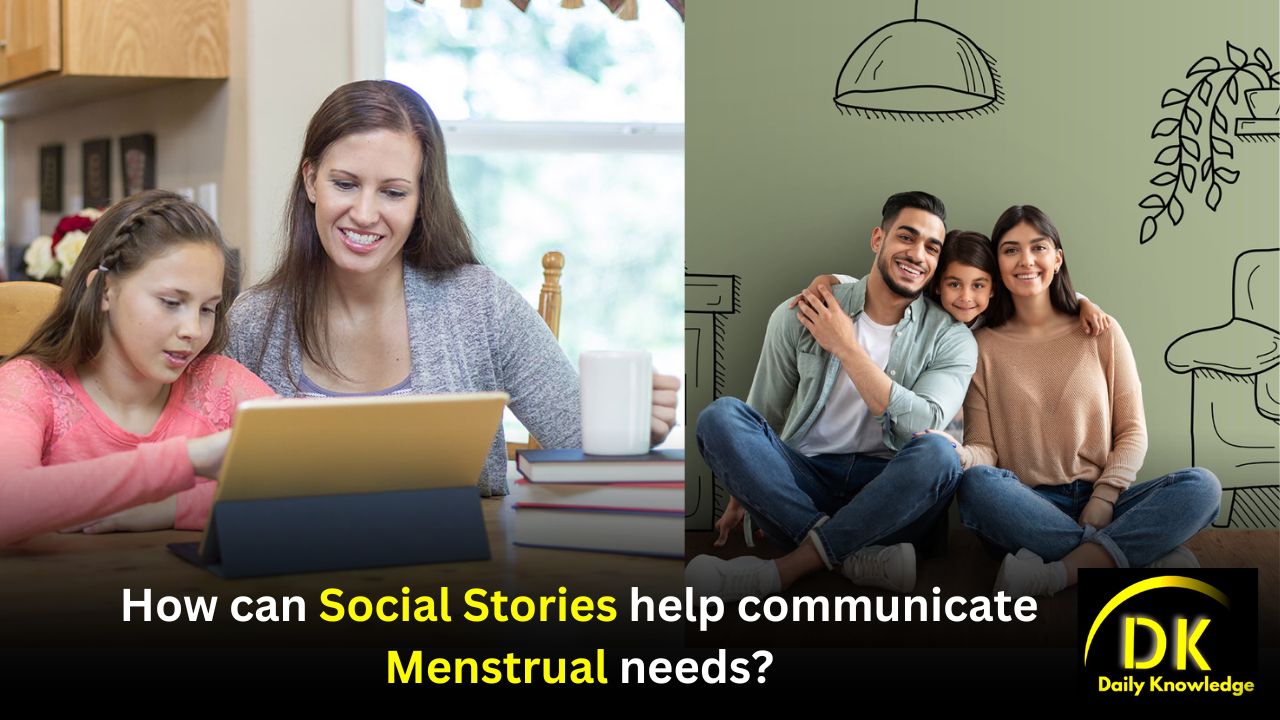Benefits of social stories for menstrual communication? What are some examples of social stories for menstrual care? How can social stories help communicate menstrual needs?
How can social stories help communicate menstrual needs?

Social stories are a valuable tool for communicating menstrual needs, particularly for individuals with autism spectrum disorder (ASD). They provide a structured way to convey important information about menstruation, addressing both the practical and emotional aspects of this natural process.
Benefits of Social Stories for Menstrual Communication
Social stories are short narratives that use simple language and visuals to explain social situations and expected behaviors. They help individuals understand complex concepts by breaking them down into manageable parts, and answering essential “wh” questions such as who, what, when, where, and why.
- Enhanced Understanding: Social stories can effectively teach girls about menstrual cycles, including what to expect during their periods. They can outline the physical changes, the duration of menstruation, and the importance of hygiene practices.
- Visual Support: Incorporating pictures and visual aids into social stories helps reinforce understanding. Visuals can clarify concepts and provide cues that make the information more accessible. For example, a social story might include images of menstrual products and steps for changing pads.
- Reduction of Anxiety: Social stories can significantly reduce anxiety related to this life change by preparing individuals for menstruation in advance. Early discussions help normalize the topic and allow time for processing information.
- Skill Development: Social stories can guide users through specific tasks associated with menstruation, such as managing hygiene during a period. This includes step-by-step instructions that promote independence in self-care routines.
- Emotional Awareness: These narratives can also address emotional changes associated with menstruation, such as mood swings or discomfort. By describing possible feelings during this time, social stories help individuals recognize their emotions and communicate them more effectively.
- Parental Involvement: Social stories can be shared with parents or caregivers to foster open communication about menstruation at home. This collaborative approach ensures that everyone is on the same page regarding expectations and support.
Implementation Strategies
- Customization: Tailor social stories to the individual’s comprehension level and family language preferences. This personalization makes the stories more relatable and effective.
- Use of Multiple Stories: Instead of one lengthy narrative, consider creating several shorter stories focusing on different aspects of menstruation (e.g., general information, hygiene practices, coping strategies) to avoid overwhelming the learner.
- Role-Playing: Engage in role-playing scenarios based on social stories to practice handling menstrual situations in a safe environment. This method reinforces learning through active participation.
In summary, social stories serve as an effective communication tool for addressing menstrual needs among individuals with autism. They facilitate understanding, reduce anxiety, promote independence in self-care, and encourage emotional awareness—all crucial elements for navigating this significant life transition.
What are some examples of social stories for menstrual care?
Here are some examples of social stories designed to help individuals, particularly those with autism, understand and manage menstrual care:
Examples of Social Stories for Menstrual Care
- “Growing Up”
This social story introduces the concept of growing up and explains the changes that come with puberty, including menstruation. It addresses the physical and emotional changes girls may experience during their menstrual cycle.
- “My Period”
This story focuses specifically on what a period is, what to expect when it starts, and the normalcy of menstrual flow. It reassures the reader that having a period is a natural part of growing up.
- “How to Take Care of My Period”
This social story provides a step-by-step guide on how to manage menstruation, including changing pads and maintaining hygiene. It can include visual aids to illustrate each step clearly.
- “Help! I’ve Started My Period”
This narrative helps young girls understand the steps they need to take when they get their first period. It covers practical aspects such as using menstrual products and emphasizes staying healthy and safe during this time.
- “How I Feel When I’m Getting My Period”
This story addresses the emotional symptoms associated with premenstrual syndrome (PMS). It helps individuals recognize their feelings leading up to their period, such as irritability or fatigue and reassures them that these feelings are temporary.
- “Periods are Private”
This social story discusses the importance of privacy regarding menstruation. It teaches students what should be kept private and how to communicate about their needs without sharing.
- “Putting on a Menstrual Pad”
A detailed guide that describes how to use a menstrual pad properly, including hygiene practices before and after changing pads. This story can include pictures for each step to enhance understanding.
- “Understanding My Body Changes”
This story explains the biological aspects of menstruation, including why it happens and how long it typically lasts. It aims to normalize the experience and reduce anxiety about bodily changes.
These social stories are designed to provide clear, reassuring information about menstruation, helping individuals navigate this important life stage with confidence and understanding.
How can parents create their own social stories for menstrual care?
Creating social stories for menstrual care can be an effective way for parents to communicate important information and support their children, especially those with autism or other developmental differences. Here’s a step-by-step guide on how to create customized social stories:
Step-by-Step Guide to Creating Social Stories
Identify Key Topics
Determine the specific topics you want to cover in the social story. Common themes may include:
Understanding menstruation and its biological aspects.
Hygiene practices during menstruation.
Emotional changes and coping strategies.
How to use menstrual products (pads, tampons, etc.).
- Use Simple Language: Write in clear, concise language that is age-appropriate and easy to understand. Avoid jargon and use straightforward terms to describe menstruation and related concepts.
- Incorporate Visuals: Include pictures or illustrations to complement the text. Visual aids can help clarify concepts and make the story more engaging. You can use:
Photos of menstrual products.
Diagrams showing how to use products.
Images depicting routines for hygiene.
- Personalize the Story: Customize the social story by including your child’s name and pictures of them. This personal touch can make the story more relatable and meaningful.
Structure the Story
Organize the social story into clear sections that address each topic sequentially. A typical structure might include:
- Introduction: Briefly explain what menstruation is.
- What to Expect: Describe physical changes, emotional responses, and the menstrual cycle.
- Hygiene Practices: Outline steps for using menstrual products and maintaining hygiene.
- Coping Strategies: Offer tips for managing discomfort or emotional changes.
- Use Positive Language: Frame the information positively, emphasizing that menstruation is a natural process. Encourage feelings of empowerment and self-care.
- Practice with Role-Playing: After reading the social story together, engage in role-playing scenarios based on the content. This practice helps reinforce learning and prepares your child for real-life situations.
- Review and Adjust: Regularly revisit the social story as your child grows or as their understanding evolves. Update it based on their experiences, questions, or any new information they need.
- Create a Safe Space for Discussion: Encourage open dialogue about menstruation by creating a non-judgmental environment where your child feels comfortable asking questions or expressing concerns.
- Utilize Resources: Consider using existing resources as templates or inspiration for your social stories. Books like “Taking Care of Myself” by Mary Wrobel can provide valuable insights into creating effective narratives.
By following these steps, parents can create meaningful social stories that help demystify menstruation, promote self-care, and support their children through this important life transition.

